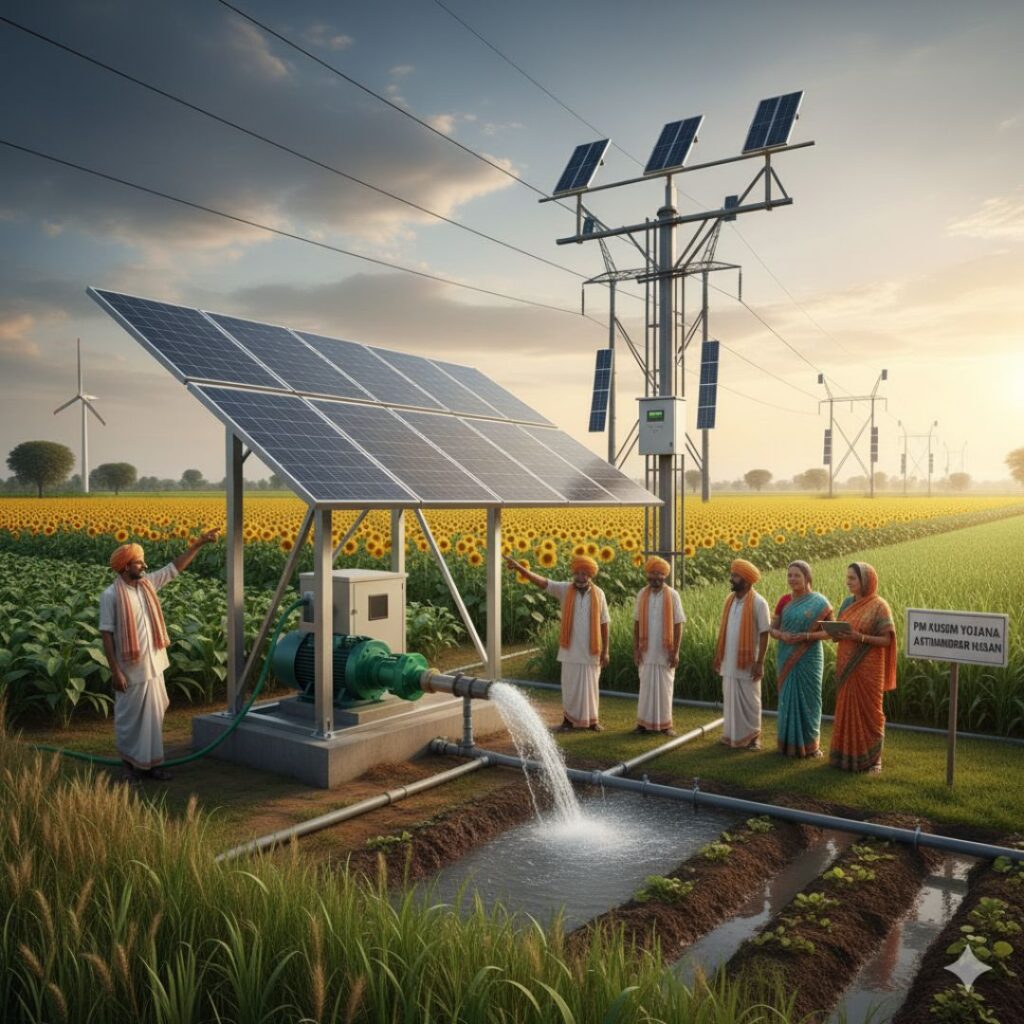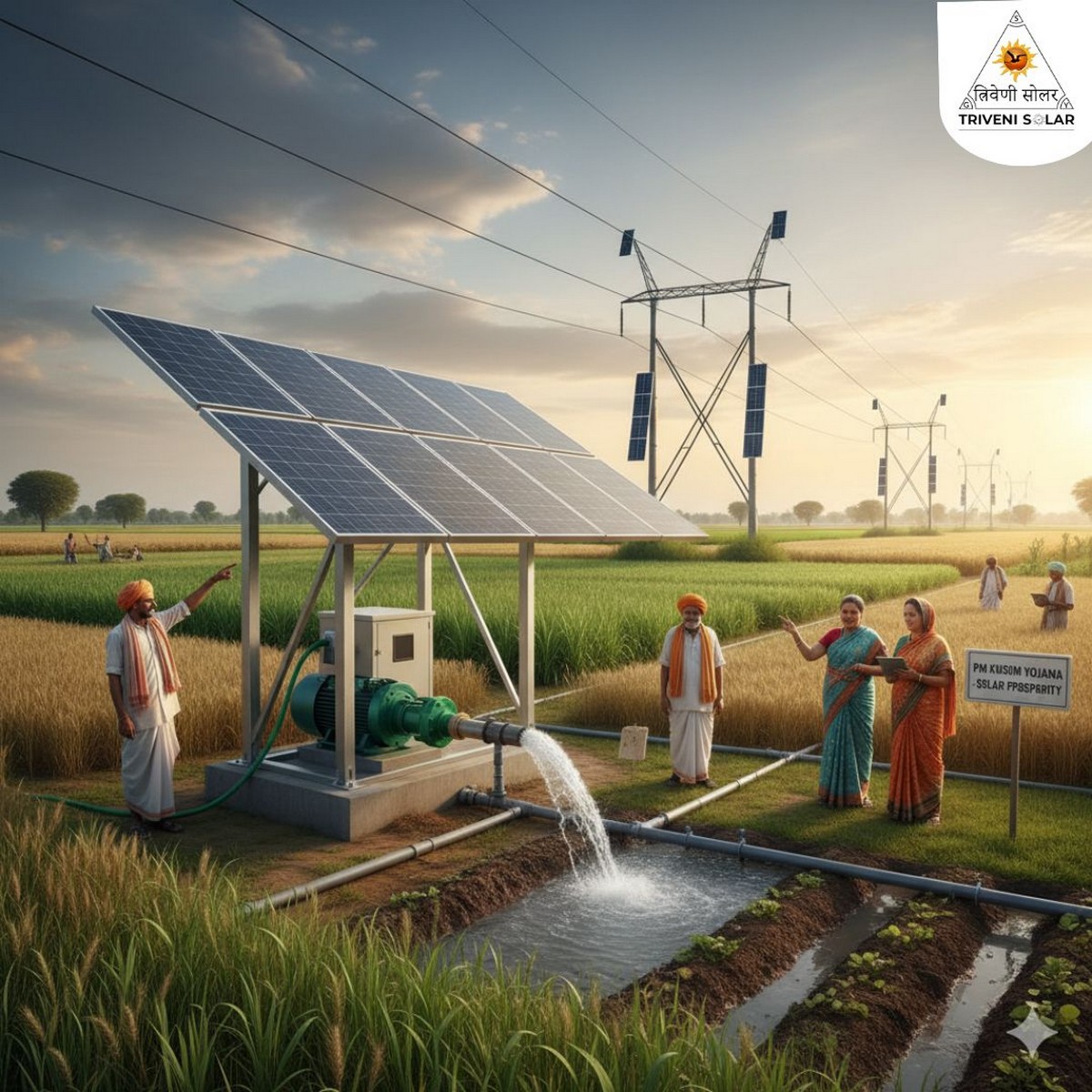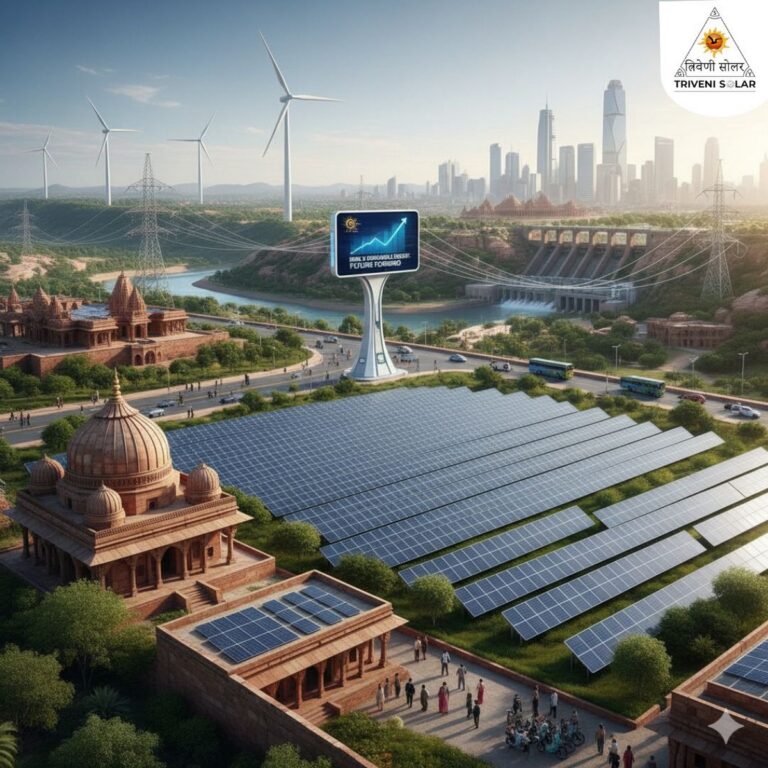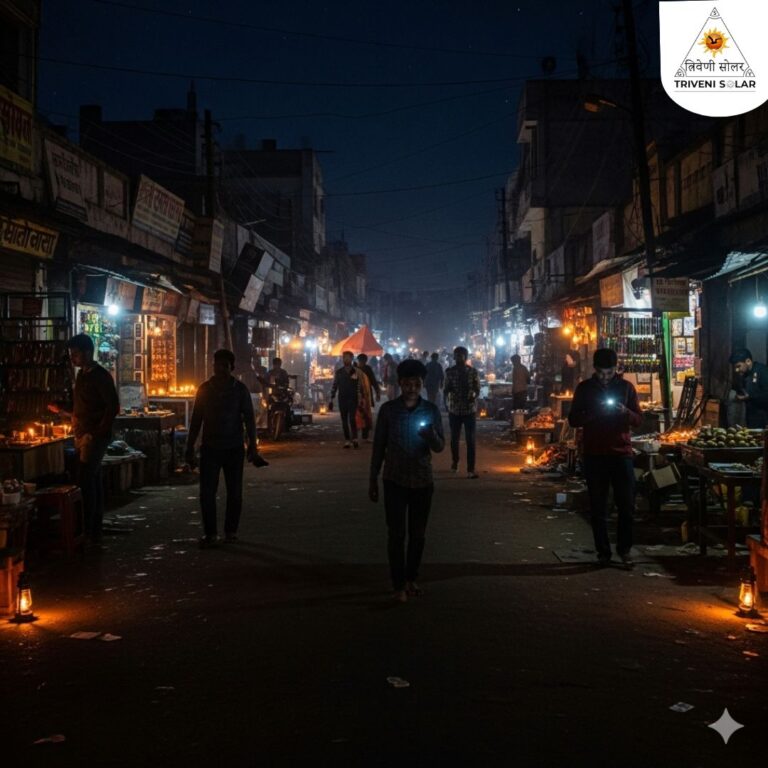The PM-KUSUM Yojana is a groundbreaking initiative by the Government of India, designed to empower farmers with solar energy solutions. By offering subsidies for solar pumps, grid-connected solar plants, and decentralized solar power projects, the scheme not only boosts farm income but also promotes sustainable and eco-friendly agriculture. 🌞🌱
Whether you are a small-scale farmer or a large landholder, PM-KUSUM Yojana can drastically reduce electricity costs, improve productivity, and help you embrace renewable energy effectively.
Table of Contents
- Introduction: Why PM-KUSUM is a Game-Changer
- What is PM-KUSUM Yojana?
- Key Components of the Scheme
- Eligibility Criteria for Farmers
- Step-by-Step Application Process
- Financial Benefits & Subsidy Structure
- Cost-Benefit Analysis Table
- Real-Life Success Stories
- Common Challenges and Solutions
- Future Scope & Government Support
- FAQs
- Conclusion
Introduction: Why PM-KUSUM Yojana is Absolutely Vital for Modern Agriculture
India is primarily an agricultural country, and farmers face the dual challenges of rising electricity costs and unpredictable weather patterns. The PM-KUSUM Yojana addresses these issues by providing sustainable energy alternatives that reduce dependency on conventional power. 🚜💡
This scheme ensures financial independence for farmers, enhances crop yield through reliable irrigation, and contributes to the nation’s renewable energy targets.
What is PM-KUSUM Yojana?
The Pradhan Mantri Kisan Urja Suraksha evam Utthan Mahabhiyan (PM-KUSUM) is a government program launched in 2019 under the Ministry of New and Renewable Energy (MNRE). Its core objective is to empower farmers by enabling them to install solar pumps and small-scale solar plants on their farms. These installations help in irrigation, generate electricity, and even sell surplus power back to the grid. ⚡🌾
Key Components of PM-KUSUM Yojana That Every Farmer Must Know
Component A: Solar Pumps – How To Make Farming More Profitable
Component A provides subsidies to farmers for installing solar-powered irrigation pumps. These pumps ensure a reliable water supply, reduce electricity bills, and are environmentally friendly.
- Subsidy: Up to 30–60% of the total cost depending on pump capacity.
- Capacity: 2 HP to 10 HP solar pumps available.
- Benefits: Reduced dependency on diesel/electricity, reliable irrigation, increased crop yield.
Component B: Grid-Connected Solar Plants – Unlocking Hidden Opportunities
Under Component B, farmers can install grid-connected solar plants up to 2 MW capacity. The surplus electricity can be sold to DISCOMs, generating additional income. This component encourages farmers to become energy producers, not just consumers.
- Financial Incentives: Capital subsidy up to 30% of project cost.
- Duration: Long-term power purchase agreements (PPAs) ensure stable revenue.
- Environmental Impact: Reduces carbon footprint and promotes green energy.
Component C: Farmer-Producer Solar Projects – The Secret to Sustainable Growth
Component C allows farmer producer organizations (FPOs) or cooperatives to establish solar plants on barren land, generating revenue and creating local employment opportunities.
- Subsidy: Up to 30% of the project cost.
- Eligibility: FPOs, cooperatives, and clusters of farmers.
- Benefits: Shared revenue model, collective growth, sustainable farming practices.
Eligibility Criteria: Who Can Claim These Stunning Benefits
Farmers, FPOs, and cooperatives who meet the following criteria are eligible:
- Must be a registered farmer or part of an FPO/cooperative.
- Landholding should have proper documentation and irrigation requirements.
- Should not have previously availed subsidies for the same purpose.
- Must comply with MNRE standards for solar equipment.

Step-by-Step Application Guide for PM-KUSUM Yojana
Applying for PM-KUSUM is simple if you follow these steps:
- Visit your state nodal agency or the official PM-Surya Ghar portal.
- Check eligibility criteria and available subsidies.
- Submit required documents: land records, ID proof, bank account, and farmer registration.
- Choose the desired solar component (pump, grid-connected plant, or FPO project).
- Application verification by state nodal agency.
- Approval and disbursement of subsidy.
- Installation by authorized vendors with MNRE-certified equipment.
Financial Benefits & Subsidy Explained with Jaw-Dropping Details
PM-KUSUM Yojana provides remarkable financial incentives that directly impact farmers’ income. 💰
| Component | Subsidy | Farmer Contribution | Extra Benefits |
|---|---|---|---|
| Solar Pumps | 30–60% | 40–70% | Reduced electricity/diesel costs, increased yield |
| Grid-Connected Solar Plants | 30% | 70% | Revenue from selling surplus electricity |
| FPO/Cooperative Projects | 30% | 70% | Shared revenue, employment generation |
Cost vs Benefit: Detailed Table to Help Farmers Decide
| Investment (₹) | Annual Savings (₹) | Payback Period | Additional Income (₹) |
|---|---|---|---|
| 1,00,000 (Solar Pump) | 20,000 | 5 years | – |
| 5,00,000 (Grid Plant) | – | 7 years | 1,50,000 from selling electricity |
| 10,00,000 (FPO Project) | – | 8 years | 2,50,000 collective revenue |
Success Stories: How Farmers Are Winning With PM-KUSUM
🌟 Ramesh Kumar, Haryana: Installed a 5 HP solar pump under Component A, reduced diesel costs by ₹25,000/year, and increased wheat yield by 15%.
🌟 Saraswati FPO, Rajasthan: Set up a 1 MW grid-connected plant under Component C, generating ₹10 lakh/year in revenue and providing employment to local farmers.
Challenges and Solutions: Avoid These Common Pitfalls
- Challenge: Lack of awareness – Solution: Use government portals and local workshops.
- Challenge: High upfront cost – Solution: Apply for full subsidy and explore bank financing options.
- Challenge: Installation delays – Solution: Hire MNRE-certified vendors and track progress online.
Future Scope & Upcoming Government Initiatives
The government is planning to expand PM-KUSUM to cover more farmers, integrate advanced solar technology, and provide better power purchase agreements. Emerging technologies like IoT-enabled pumps, remote monitoring, and battery storage are on the horizon, making agriculture more profitable and sustainable. 🌱💡
FAQs About PM-KUSUM Yojana
1. Who is eligible for PM-KUSUM Yojana?
Registered farmers, farmer producer organizations, and cooperatives meeting land and irrigation requirements are eligible.
2. How can I apply for PM-KUSUM?
Applications can be submitted via the PM-Surya Ghar portal or your state nodal agency with required documents.
3. What subsidies are available under PM-KUSUM?
Subsidies range from 30–60% depending on the solar component chosen. Additional incentives are available for grid-connected and FPO projects.
4. Can I sell surplus electricity generated?
Yes, under Component B and C, farmers can sell surplus electricity to DISCOMs through long-term power purchase agreements.
5. What is the payback period for solar pumps?
The average payback period ranges from 5–7 years, depending on investment and energy savings.
Conclusion: Maximize Your Farming Profits With PM-KUSUM
The PM-KUSUM Yojana is a golden opportunity for farmers to embrace solar energy, reduce costs, and boost income. By choosing the right component, applying for subsidies, and following a step-by-step plan, farmers can secure a profitable, sustainable, and energy-efficient future. 🌞💚
Take the first step today and explore detailed application procedures on PM-Surya Ghar. Empower your farm, save costs, and grow with the sun! ☀️🚜



